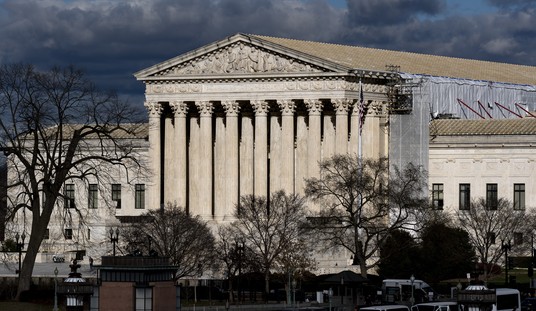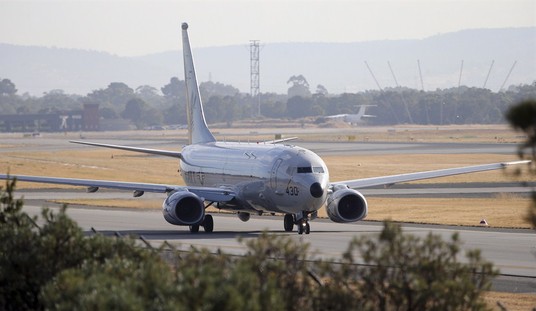Treat this as a follow-up to last night’s post noting that we’re not yet on our way down the proverbial curve in terms of daily deaths. When does that happen, exactly?
The increasingly implausible IHME model with which we’re all familiar imagines deaths in the U.S. dropping below 1,000 per day just three days from now. Yesterday we registered 2,700. Today, according to the latest data, we’re slightly north of 2,000, which is worse than the 1,700-1,800 we were registering on weekdays last week. If you believe IHME, we should see daily deaths nationwide sink below 500 on May 10, then below 100 on May 25, and then reach single digits on June 13 before dipping to zero on June 30. That seems wildly unlikely.
The modelers would probably answer that their numbers assume aggressive social distancing whereas some states, like Georgia, have already begun to relax social distancing. Right, but (a) Georgia’s reopening is limited and (b) we’re ahead of IHME’s projections right now, even before any “second wave” has had time to materialize in states that have reopened. IHME was simply too conservative in projecting deaths, it seems. (And too liberal in projecting hospitalizations initially.) We’re obviously going to top their estimate of 73,000 before August 4. By a lot.
Another model projects somewhere close to 100,000 deaths by the end of summer.
By the end of the coronavirus’s “first wave” this summer, America will likely have buried close to 100,000 victims of the disease, with as many as 9 million people having become infected, according to Alessandro Vespignani, the director of the Network Science Institute at Northeastern University. The elite research lab, which has gained international notice for its pandemic modeling, also concluded that at least 80,000 to 90,000 Americans will be dead of coronavirus complications by mid-May…
He said the aggressive social distancing measures most Americans have undertaken doubtless saved several hundred thousand lives. New cases of COVID-19, the disease that results from exposure to the coronavirus, have plateaued as a result, Vespignani said. But he warned that reopening public spaces too soon or without adequate testing and contact tracing infrastructure in place could lead to a dramatic resurgence in infections and deaths.
Vespignani estimates 500,000 Americans would be dead by now if we had carried on with business as usual, without social distancing. How long will it take us to reach 100,000 as-is, though? At a rate of, say, 1,500 deaths per day we’d reach that total by … the end of the coming month. With the official start of summer still weeks away.
FiveThirtyEight flagged this data from a survey of experts at UMass asking how soon it’d be before the U.S. saw a week with fewer than 5,000 deaths. The last time that happened was at the start of the outbreak, during the last week of March. We’ve already recorded 8,000 deaths nationally this week, with two days still to go. Results of the survey:

A plurality of experts believe we have a bare minimum of 35,000 deaths to go in this first wave (there are seven weeks between now and June 20), and likely many more. After all, even if we drop below 5,000 per week after June 20, we’re not dropping immediately to zero. There’ll be weeks of deaths in the low thousands to come after that.
Trevor Bedford, the Seattle researcher who was among the first to detect silent community spread of the virus in Washington state, thinks maybe it’s time to stop thinking in “waves.” There may not be waves. Our current levels of daily deaths and new infections may be the new normal.
As stated before, it's clear that social distancing has had a large impact on transmission (https://t.co/Po4VuHx3VS). However, this effect has been shy of suppression nationally and hence the plateau in cases rather than a consistent decrease. 3/10
— Trevor Bedford (@trvrb) April 30, 2020
This plateau at a national level is the result of some states with rising case counts (and Rt greater than 1) and other states with falling case counts (and Rt less than 1). 4/10 pic.twitter.com/Fd1iWA7Z3s
— Trevor Bedford (@trvrb) April 30, 2020
However, given that Rt nationally is at the moment ~1, I don’t see why we expect large declines in daily case counts over the next month, given that behavior has been pretty static, or perhaps rising. Figure from https://t.co/4zoa39mm9l. 7/10 pic.twitter.com/zKnqXOOzjH
— Trevor Bedford (@trvrb) April 30, 2020
Because different states will be on different timetables and trying different policies to reopen, says Bedford, we might expect the cumulative national effect on deaths and cases to be a “plateau” more so than a decline. For instance, as Georgia opens up but New York remains locked down, cases may rise in the former and shrink in the latter. Georgia will add deaths this summer as deaths in New York continue to drop. Then the trends may reverse — Georgians might be spooked by the rise in fatalities as New Yorkers are finally getting ready to reemerge from hibernation. (The differing size of the two states’ populations will obviously have different effects on the national numbers.) The point is, there may be no “down” side of the epidemic curve. There may just be stasis or something like it, with Americans in different regions simultaneously increasing and decreasing new cases and deaths by reacting in opposite ways to their respective local conditions. E.g.:
Texas reports 1,033 new cases of COVID-19 today — the day before we are set to start reopening.
The last time the state broke 1,000 was on April 10. https://t.co/aQ1lTZJxEd
— Allie Morris 🌟 (@MorrisReports) April 30, 2020
As word circulates in Texas that cases are climbing at a moment when things are supposed to be getting “safer,” Texans may compensate by delaying plans to restart consumer activity, limiting any new spike. New cases and new deaths may never fall below a certain daily level if Bedford is right; the daily numbers may reflect a “comfort level” indicating Americans’ aggregate tolerance for risk in the name of pursuing semi-normal social and commercial activities. If, hypothetically, it turns out that we plateau at around 1,000 deaths per day then we should expect to see close to 100,000 deaths in the summer months of June, July, and August alone — not counting the 60,000 that have already been recorded. Think on that.
One more number for you, this time from Gallup.

The share of parents who say they’re able to carry on with social distancing as long as necessary before experiencing financial hardship is getting larger, not smaller, over time. Across the population, the share of Americans who say they can carry on social distancing as long as necessary without hardship has also increased, from 55 percent two weeks ago to 59 percent now. Presumably that’s a result of the beefier unemployment benefits Congress passed in the coronavirus rescue package and of households learning to manage better in the new normal. If you still have an income (from unemployment or otherwise) and your spending is way down — because, well, what’s left to spend on? — your day-to-day cash flow may have improved enough to make sustained social distancing feasible. Which was the point of the rescue package, of course. Keep people healthy by making it viable to keep them at home.
I’ll leave you with this. Trump is right that things could have been much worse but selling a six-figure death toll as a major achievement is not a great talking point for the election.
Trump today: "Our death totals, our numbers, per million people, are really very, very strong. We're very proud of the job we've done." Via CSPAN pic.twitter.com/gOi7DIJIQX
— Kyle Griffin (@kylegriffin1) April 30, 2020








Join the conversation as a VIP Member